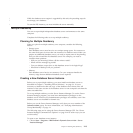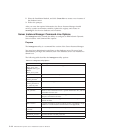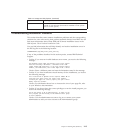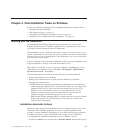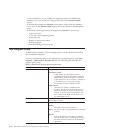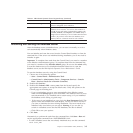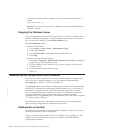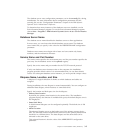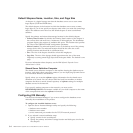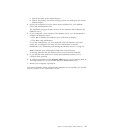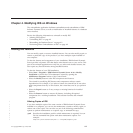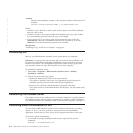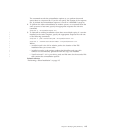The database server uses configuration parameters, set in the onconfig file, during
initialization. For more information about configuration parameters and the
onconfig file, see the “Configuration Parameters” chapter of the IBM Informix
Dynamic Server Administrator’s Reference.
To determine how many instances of the database server are installed, run the
Server Instance Manager program. To run the Server Instance Manager program,
choose Start > Programs > IBM Informix Dynamic Server 11.50 > Server Instance
Manager.
Database Server Name
The database server name identifies the database server to client applications.
In most cases, you can choose the default database server name. The database
server name that you specify is the value for the DBSERVERNAME configuration
parameter.
Database server names must begin with a letter and can contain only letters,
numbers, and the underscore character.
Service Name and Port Number
The service name specifies the servicename entry and the port number specifies the
port entry for the database server in the sqlhosts registry.
Specify the service name and port number for the TCP/IP network protocol.
If only one database server instance exists on the computer, the installation
program provides default values. It is recommended that you use these default
values. For subsequent database server instances, you must provide unique values.
Dbspace Name, Location, and Size
A dbspace is a logical collection of chunks to which databases and tables are
assigned.
During installation, the root dbspace is created automatically. You can configure an
additional data dbspace, mirror location, or smart blob drive.
Specify the location and disk-space size for the dbspace:
v Primary Data Location
By default, the primary data location is the current drive. The installation
program displays the amount of available disk space; the default dbspace size is
200 megabytes.
v Smart blob Drive
A default smart blobspace can be configured optionally. The default size is 200
megabytes.
v Mirror Location
The mirrored location serves as the backup area if the primary storage device
fails. The mirrored location should be the same size as the primary location and
should be in a different drive. The data dbspace and the smart blob can be
mirrored on the same drive.
This mirrored location is also the value of the MIRRORPATH configuration
parameter.
Chapter 3. Post-Installation Tasks (Windows) 3-5



